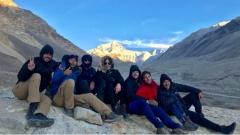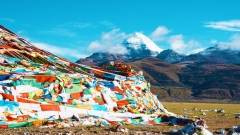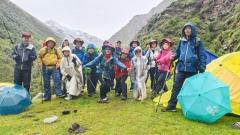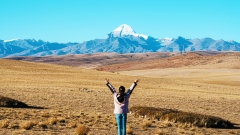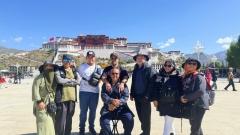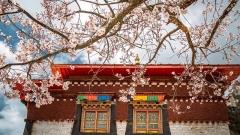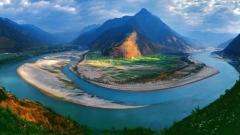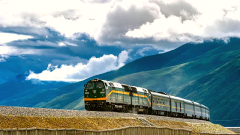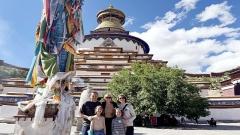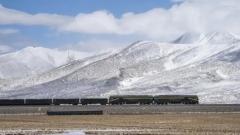More than a destination, Tibet is an awakening – a place where pilgrims spin prayer wheels, monks engage in fiery debates, and yak herds dot the vast, indigo-hued grasslands. To help you plan an unforgettable trip to Tibet, we have carefully selected a list of 25 must-do things in Tibet.
1. Ascend the Steps to the Potala Palace
Towering 117 meters above Lhasa Valley on Red Hill, the Potala Palace commands awe and reverence. Constructed in the 7th century and expanded over later dynasties, this labyrinthine fortress-monastery blends palace grandeur with monastic austerity. Inside, over a thousand rooms house intricate Thangka paintings, gilded chapels, and the white-walled Living Quarters of the Dalai Lamas. As you climb the broad stone terraces, pause at each landing to glimpse panoramic views of Lhasa’s mosaic of flat-roofed homes and winding alleyways. At the summit, the golden roofs and bronze prayer wheels of the Red and White Palaces shimmer in the high-altitude light—testimony to Tibetan devotion and architectural genius.
Insider Tip: Arrive early to avoid the crowds and catch the first light illuminating the palace’s façade. Allow at least two hours to tour both the interior halls and the surrounding perimeter.
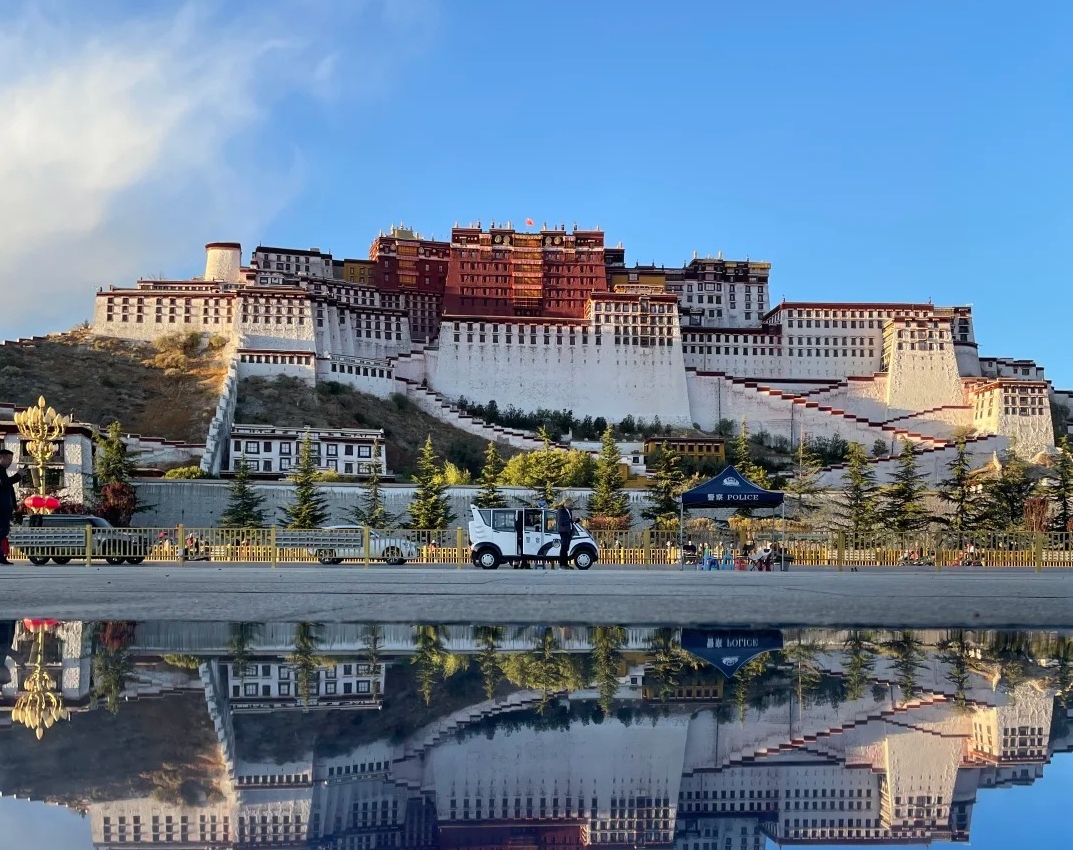
Potala Palace
2. Discover Spiritual Heartbeats at Jokhang Temple
At the heart of old Lhasa stands the Jokhang Temple, soul of Tibetan Buddhism. Built under King Songtsen Gampo in the 7th century to house a sacred Buddha image, the Jokhang draws pilgrims who prostrate themselves—sometimes covering miles on their knees—to approach the temple’s sanctum. Inside, the life-size statue of the twelve-year-old Sakyamuni Buddha glows beneath an ornate canopy, encircled by fragrant butter lamps. The walls display murals of Buddhist cosmology, and the atmosphere hums with chanted mantras. Step onto the rooftop terrace for an uninterrupted view of the Potala Palace across the valley, then linger in Barkhor Square to observe the procession of prayer-flag-draped pilgrims.
Insider Tip: Visit during early morning or late afternoon prayer sessions to join in the chanting and witness the rhythmic clapping of the faithful.
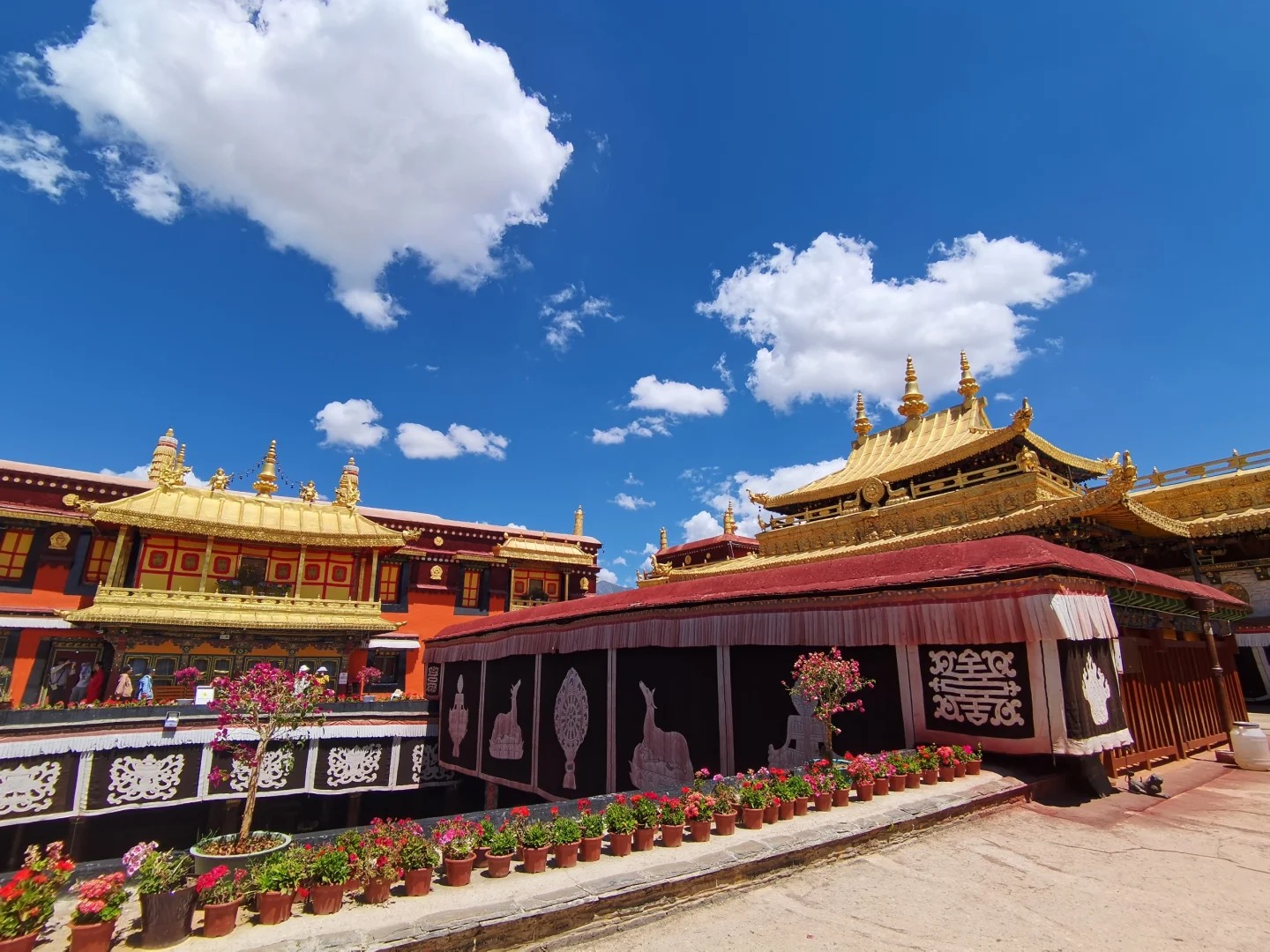
Jokhang Temple
3. Circumambulate Barkhor Street (Kora)
Encircling Jokhang’s outer walls, Barkhor Street is both a bustling marketplace and a sacred kora (circumambulation route). Join Tibetans making circuit after circuit, spinning handheld prayer wheels and intoning “Om Mani Padme Hum.” Along the way, admire the carved wooden balconies of 17th-century merchant houses, browse stalls overflowing with yak wool textiles and silver jewelry, and pause at incense burners where worshippers leave offerings of juniper smoke. A single lap around the street takes roughly 30–45 minutes, but you can meander through side alleys and teahouses to savor the living tapestry of daily life.
Insider Tip: Bargain respectfully with shopkeepers—haggling is expected but always done with a warm smile.
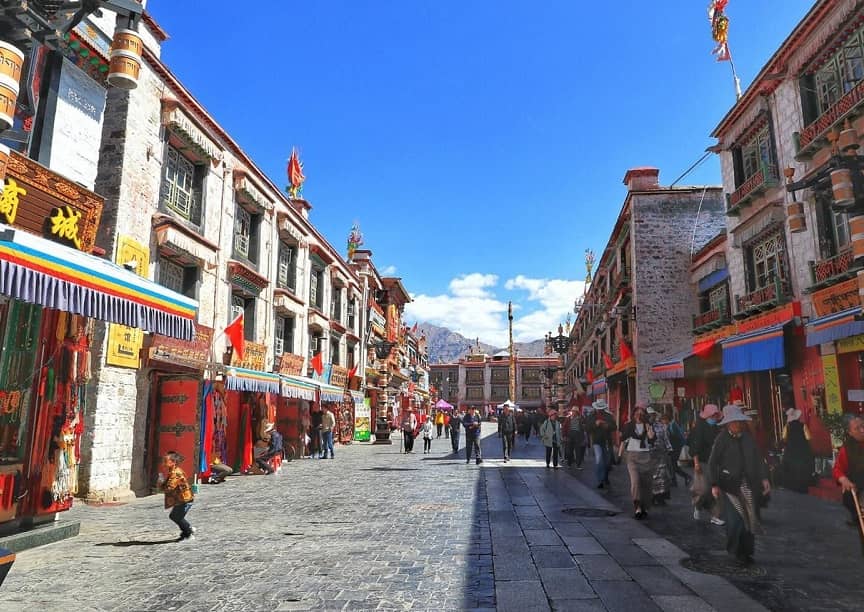
Barkhor Street
4. Savor Tibetan Sweet Tea in a Traditional Teahouse
Beyond the grand palaces and temples, the beating heart of Tibetan society often lies within its teahouses. Seek out a hearth-warmed room near Barkhor or tucked away in Lhasa’s eastern quarters. The tea is unlike any Western brew: a rich blend of brick tea, yak butter, salt, and sugar, whipped into a savory-sweet emulsion. As you cradle your bowl, observe locals playing Tibetan chess or quietly reading scripture scrolls. Strangers often spark conversations over a shared table, and before long, you’ll find yourself swapping stories with Tibetan elders whose English may be limited but whose hospitality is boundless.
Insider Tip: Ask for “po cha” (butter tea) and enjoy it slowly—this high-calorie beverage is fuel for cold, high-altitude days.
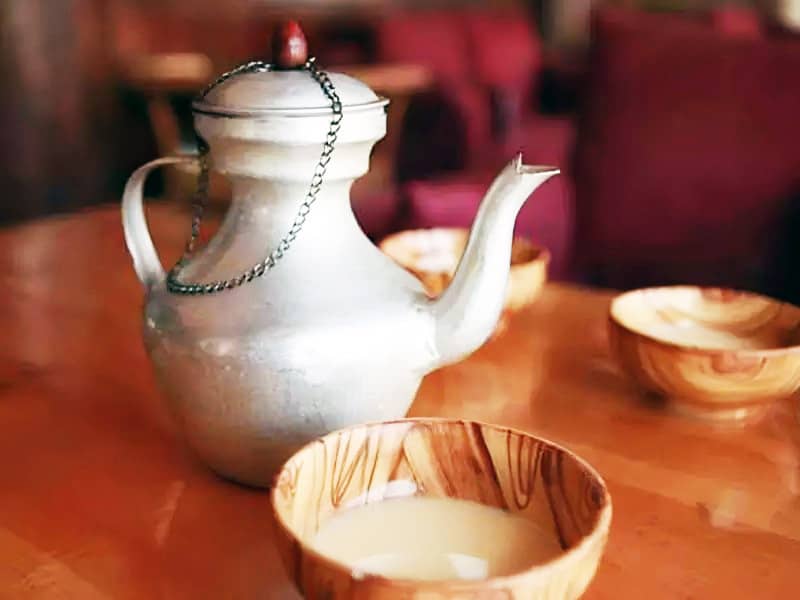
Tibetan Sweet Tea
5. Delight in Authentic Tibetan Cuisine
Tibet’s high-altitude climate demands sustenance, and its cuisine rises to the challenge with hearty, flavor-packed fare. In local restaurants across Lhasa or in roadside eateries on mountain passes, sample:
- Momo: Steamed dumplings filled with yak or beef, served with chili oil.
- Thukpa: Wheat noodle soup brimming with vegetables, meat, and aromatic broth.
- Tsampa: Roasted barley flour mixed with butter tea or cheese curds, forming a dough-like staple.
- Yak Butter Tea: The classic “po cha,” providing warmth and energy.
- Yak Meat Stew: Slow-cooked chunks of yak in a fragrant broth with potatoes or radishes.
Each dish offers a window into Tibetan adaptation and creativity at 3,600 meters above sea level.
Insider Tip: For a social dining experience, join a Tibetan family–style meal served on a low table, where sharing is part of the ritual.
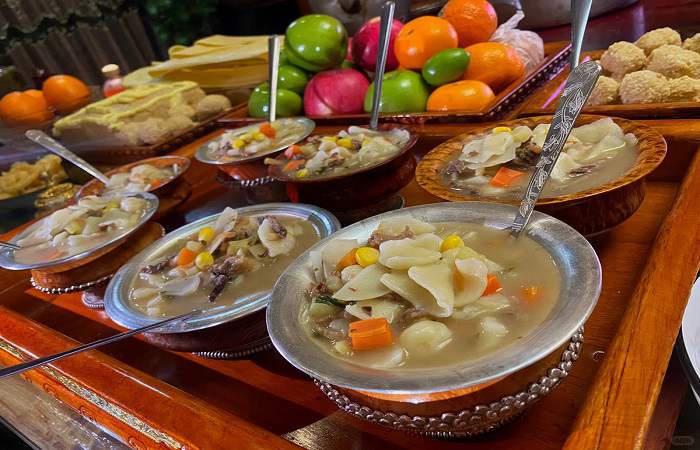
Tibetan Cuisine
6. Stand Eye to Eye with Everest at Base Camp
No Tibet itinerary is complete without breathing the same air as the world’s highest peak—Mount Everest. Through windswept passes and yak-pulled caravans, your journey culminates at Everest Base Camp (5,200 m). Here, prayer flags snap in the Tibetan wind against a backdrop of ice and rock. For those seeking an extra challenge, trek from Tingri across Gawula Pass (5,198 m), stopping at high-latitude camps beneath the Khumbu Icefall. Whether you spend one night or several, the panorama of Everest rivaling the heavens is an unforgettable summit even if you don’t climb further.
Insider Tip: Acclimatize properly in Shigatse or Gyantse before arriving at Base Camp to minimize altitude sickness.
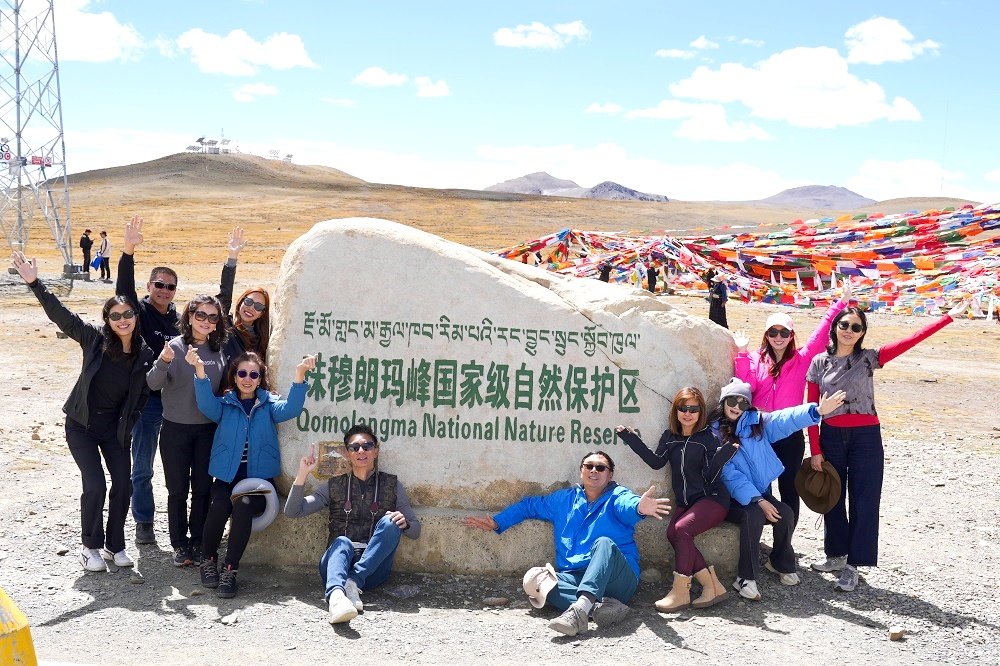
Tourist photos at Everest Base Camp
7. Marvel at the Sacred Lakes: Namtso & Yamdrok
Tibet’s holy lakes mirror the sky in hues of turquoise and sapphire, framed by snow-capped peaks. Two of the most accessible:
- Yamdrok Lake: Just 150 km southwest of Lhasa, this glacial lake sits at 4,441 m. The curved shoreline and desert-like hills create a surreal contrast of colors.
- Namtso Lake: At 4,718 m and 220 km north of Lhasa, Namtso is one of the highest saltwater lakes in the world. The famed six-day Lhasa–Namtso circuit takes you through traditional nomad camps and yak pastures.
At both lakes, trek along the ridges for changing perspectives, photograph lone chortens against the water, and camp under the Milky Way’s brightest star fields.
Insider Tip: If pressed for time, opt for a day trip to Yamdrok on the way to Shigatse or Everest region—no extra permits required.
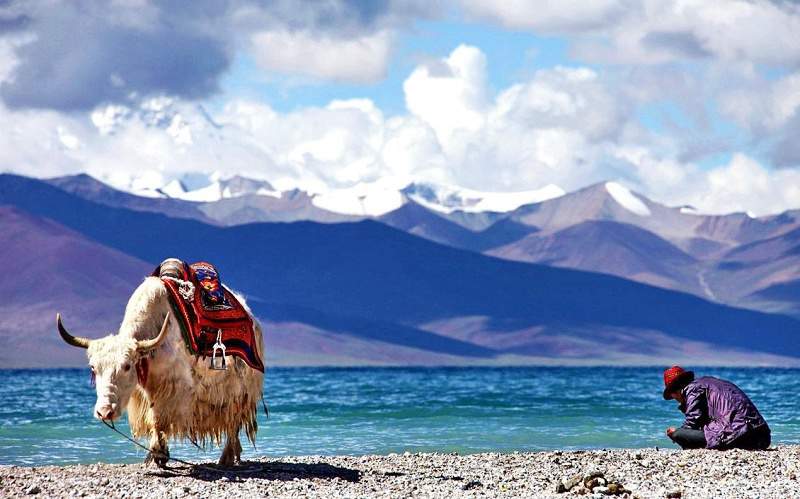
Namtso Lake
8. Embark on a Kailash Kora for a Life-Changing Pilgrimage
For spiritual seekers and trekkers alike, the 52-kilometer circuit around Mount Kailash is an epic journey of faith and endurance. Starting from Darchen, the kora rises over Drolma La Pass (5,630 m), where you’ll witness pilgrims performing full-body prostrations across the rocky path. Along the way, views of Lake Mansarovar and the jagged silhouette of Kailash fuel both body and soul. Most visitors complete the circuit in three days, camping each night amid surreal, high-altitude deserts.
Insider Tip: Travel in summer (June–August) when mountain passes are open; outside these months, heavy snow can block the route.
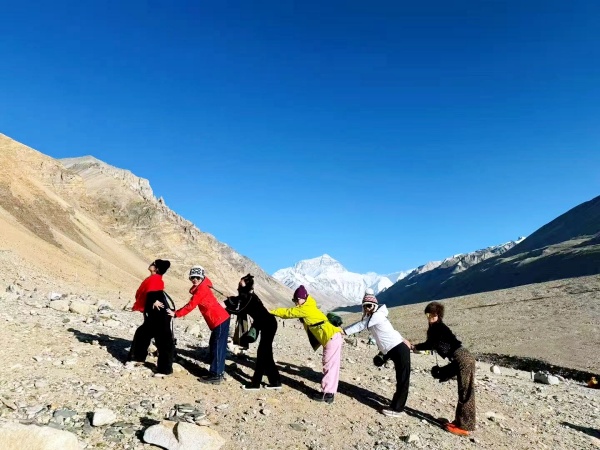
Kailash
9. Ride the “Celestial Road” on the Qinghai–Tibet Railway
Dubbed the “Sky Train,” the Qinghai–Tibet Railway traverses permafrost plateaus, frozen lakes, and windswept grasslands at elevations exceeding 4,500 m. Onboard, cars are pressurized to ease altitude adaptations, and large panoramic windows showcase a tableau of Tibetan nomads, yaks, wild antelope, and miles of empty horizon. Arrive in Lhasa relaxed, having already glimpsed the wonders of the plateau.
Insider Tip: Book a daytime journey for maximum landscape viewing—overnight trains are convenient but miss the daylight spectacle.
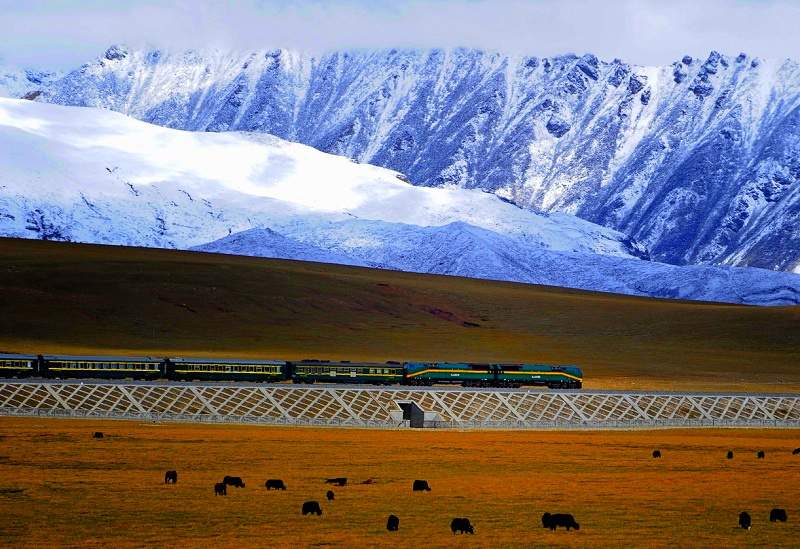
Qinghai-Tibet Railway
10. Witness the Monastic Debates at Sera Monastery
Each afternoon (Mon–Sat, 15:00–17:00), Sera Monastery’s courtyard erupts in intellectual sparring as Gelug monks debate Buddhist philosophy. Clapping hands punctuate questions, and rapid-fire responses fly across the courtyard. The atmosphere is both scholarly and playful, a tradition honed over centuries. Sit among local spectators on low benches as novices challenge senior monks, and feel the hum of devotion transformed into rigorous debate.
Insider Tip: Arrive by 14:45 to secure a good seat on the stone steps; bring a light jacket as the shade can be cool.
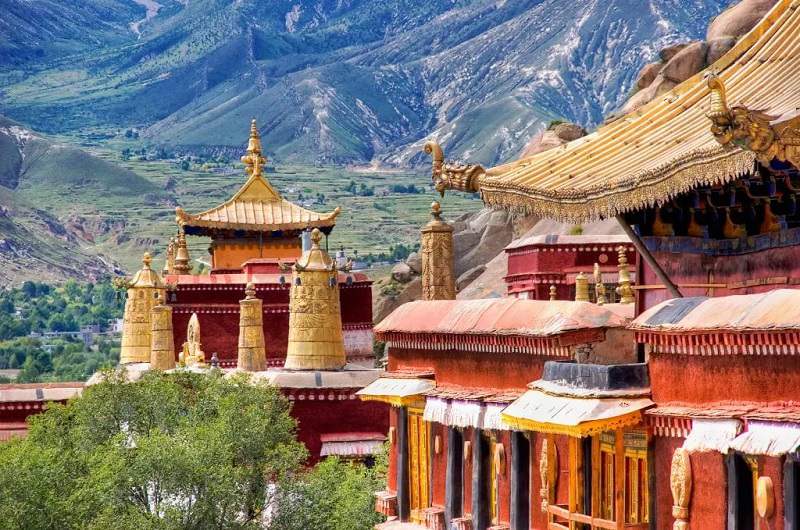
Sera Monastery
11. Share a Meal with a Tibetan Family in a Village
To truly connect with Tibetan life, spend an afternoon or overnight in a nearby village—such as in Kyichu Valley outside Lhasa. Home-stays offer homely meals of tsampa, butter tea, and yak cheese. Join in milking yaks, tending barley fields, or weaving fleece. Children may whisk you off on impromptu games, and elders will delight in sharing folklore under starlit skies. These authentic exchanges illuminate everyday Tibetan family bonds and customs.
Insider Tip: Learn a few Tibetan greetings—locals deeply appreciate efforts to speak their language.
12. Explore Tibet’s Shimmering Glaciers
The Tibetan Plateau is home to Asia’s largest concentration of glaciers outside the polar regions. Two dramatic examples:
- Rangbuk Glacier: At the northern foot of Everest, this glacier spills from the high Himalayas like a frozen river. Sunrise on the ice offers a palette of blues and purples.
- Karola Glacier: Framed by ochre cliffs near Yamdrok Lake, Karola’s ridges and crevasses gleam in the sun, a photographer’s paradise.
Guided hikes across moraine trails permit close-up views of icefall tongues and alpine flora.
Insider Tip: Pack crampons and a warm, windproof jacket—even in summer, glacier winds bite.
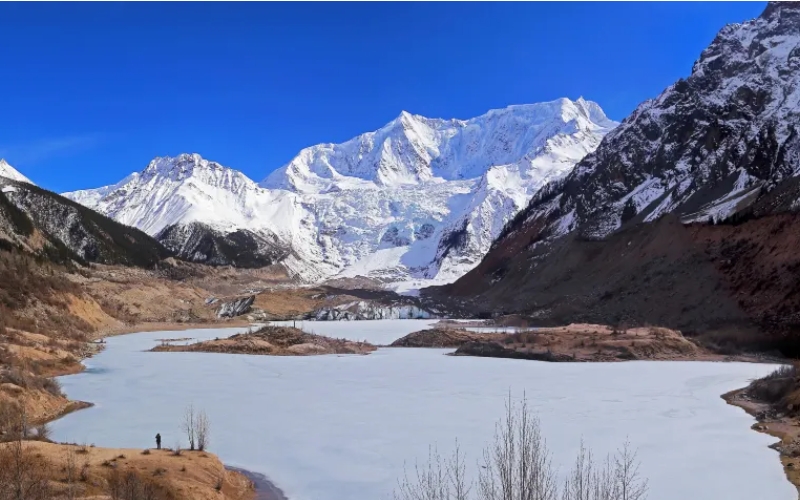
Midui Glacier
13. Catch Panoramic Vistas at High Mountain Passes
Between valleys and summits lie Tibet’s high passes—each a lookout onto earth’s loftiest peaks. On the road to Everest or Kailash, pause at:
- Gawula Pass (5,198 m): Panoramic views of Makalu, Cho Oyu, and Everest line the horizon.
- Gyatso La (5,220 m): Trek atop undulating ridges with Namtso Lake flickering below.
- Pang La (5,150 m): Snow fields and sky meet in crystalline clarity.
These summits reward early starts with sunrise paints of rose-gold and pastel lavender across Himalayan walls.
Insider Tip: Travel in a sturdy four-wheel-drive vehicle—roads to these passes can be rough but reward you with solitude and spectacle.
14. Photograph Portraits with Tibetan Yaks & Mastiffs
No Tibet adventure is complete without a souvenir photo alongside the plateau’s gentle giants: yaks and Tibetan Mastiffs. At lakeshores, monasteries, and pass summits, local herders offer these friendly beasts for a portrait—often for a small tip. Yak wool coats drift in the breeze as yaks graze behind you, hooves sinking into alpine grass. Mastiffs, with their glossy coats and placid demeanor, make noble companions in front of fluttering prayer flags.
Insider Tip: Ask permission first and toss a handful of dried barley for yaks as a goodwill gesture.
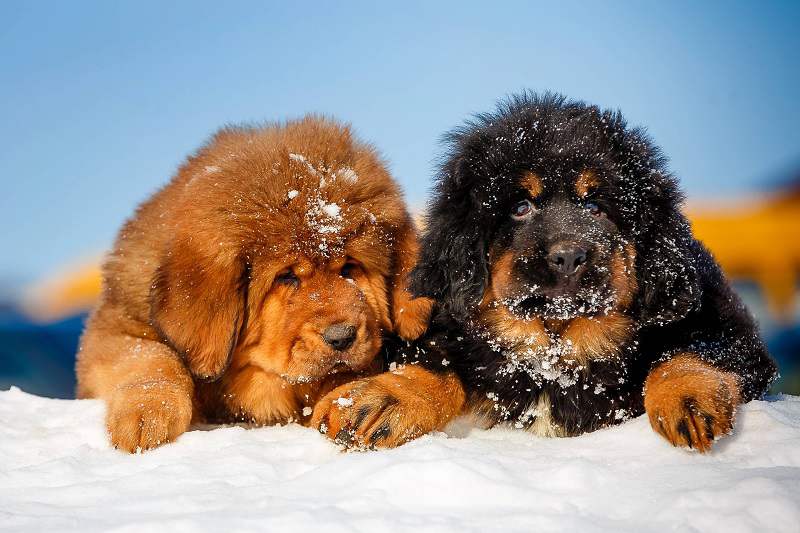
Tibetan Mastiffs
15. Extend Your Journey to Nepal & Bhutan
For an epic Himalayan odyssey, weave Tibet into a grand loop through Nepal’s Kathmandu Valley and Bhutan’s Paro Valley. Cross at Gyirong or Hilsa by overland convoy, or fly via Kathmandu. In Nepal, marvel at Boudhanath Stupa and trek through Sherpa villages; in Bhutan, explore Punakha’s fortress and the Tiger’s Nest Monastery. Combining these three realms yields a transformative Himalayan tapestry—from Tibet’s high plateau to Nepal’s terraced hills and Bhutan’s verdant valleys.
Insider Tip: Secure visas well in advance—each country has its own permit requirements and processing times.
16. Celebrate Tibetan Festivals
Timing your visit to coincide with a local festival offers an immersive cultural crescendo. Highlights include:
- Shoton Festival (July–August): Thangka unveilings and opera performances in Norbulingka Palace gardens.
- Saga Dawa (May–June): Celebrations of Buddha’s birth, enlightenment, and parinirvana, with pilgrimages to holy sites.
- Horse Racing Festival (August–September): Speed and skill on rural grasslands near Lhasa, accompanied by yak races and folk dances.
Festivals pulse with color, music, and communal energy—offering a window into Tibet’s living traditions.
Insider Tip: Book festival accommodation early; rural homestays near festival grounds often fill months in advance.
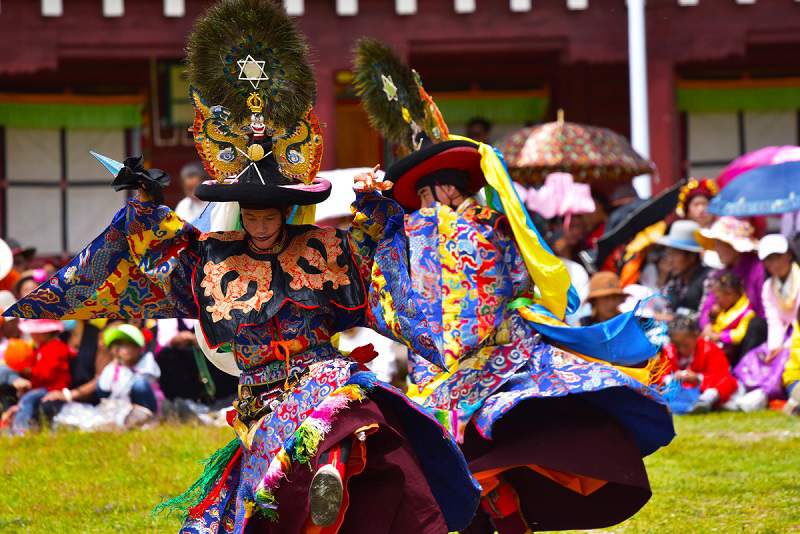
Tibetan Festival
17. Side Trips from Lhasa: Shannan & Ganden
Beyond Lhasa’s core, two side-trip jewels await:
- Shannan (Lhoka): Birthplace of Tibetan civilization. Tour Samye Monastery—Tibet’s oldest—and Yumbulagang Palace, perched on a chimney-like hill.
- Ganden Monastery: Birthplace of the Gelug school. A two-hour drive brings you to a lofty complex and panoramic valley hikes.
These excursions deepen your knowledge of Tibet’s spiritual evolution and architectural heritage.
Insider Tip: Combine Shannan and Ganden into a single two-day loop with an overnight in Tsetang.
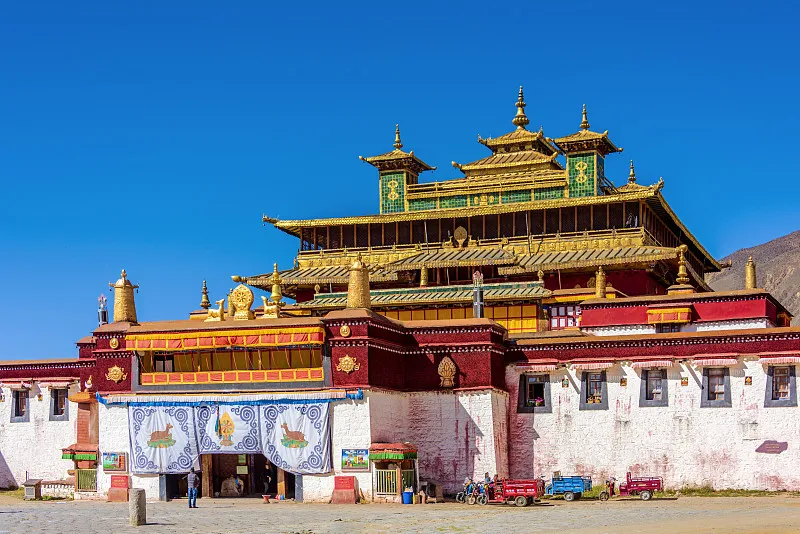
Shannan Samye Temple
18. Camp with Nomadic Tibetan Families
Venture deep into Changthang’s pastoral expanses to live with nomadic herders. Pitch your tent beside yak corrals and join in daily tasks—milking, cheese-making, and setting up felt tents. By night, gather around the fire to share songs under a blanket of stars untainted by city lights. This is the closest you’ll come to centuries-old nomadic traditions still practiced today.
Insider Tip: Bring small gifts—warm socks, scarves, or school supplies for nomad children are always gratefully received.
19. Trek: From Everest Base Camp to Lhasa Valley Trails
Choose your stride:
- Everest Base Camp Trek: A rigorous 10–14 day journey from Rongbuk to the Khumbu Icefall, passing yak caravans and remote chapels.
- Lhasa Valley Hikes: Gentle 2–4 hour loops around Nyethang and Drepung monasteries, offering valley vistas and terraced farms.
Whether you crave a Himalayan odyssey or a meditative wander, Tibet’s trails span every appetite.
Insider Tip: Hire a local guide to enrich each trek with legends, bird calls, and hidden shrines.
20. Unwind in Tibetan Hot Springs
After days of exploration, soak in steaming mineral waters that Tibetans have revered for centuries. Notable springs include:
- Dezong Hot Spring: Near Yamdrok Lake, celebrated for its skin-nourishing properties.
- Qiusang Hot Spring: A remote spot favored by herders, offering solitude and simple mud-brick baths.
The contrast of scalding pools and crisp mountain air makes for sublime relaxation.
Insider Tip: Bring water shoes; natural spring beds can be rocky or moss-covered.
21. Discover Eastern Tibet: Nyingchi & Namcha Barwa
Eastern Tibet’s valleys burst with verdant forests, gushing rivers, and flowers in bloom. Key highlights:
- Nyingchi: Dubbed the “Swiss of Tibet,” its pine forests and peach blossoms carpet the valley floor.
- Namcha Barwa: Rising to 7,782 m, this peak closes the eastern Himalayas with a sheer drop into Grand Canyon depths.
Trekking, rafting, and birdwatching here feel worlds away from the arid plateau.
Insider Tip: Visit in spring (April–May) for peach blossoms or autumn (September–October) for pine-needle carpets.
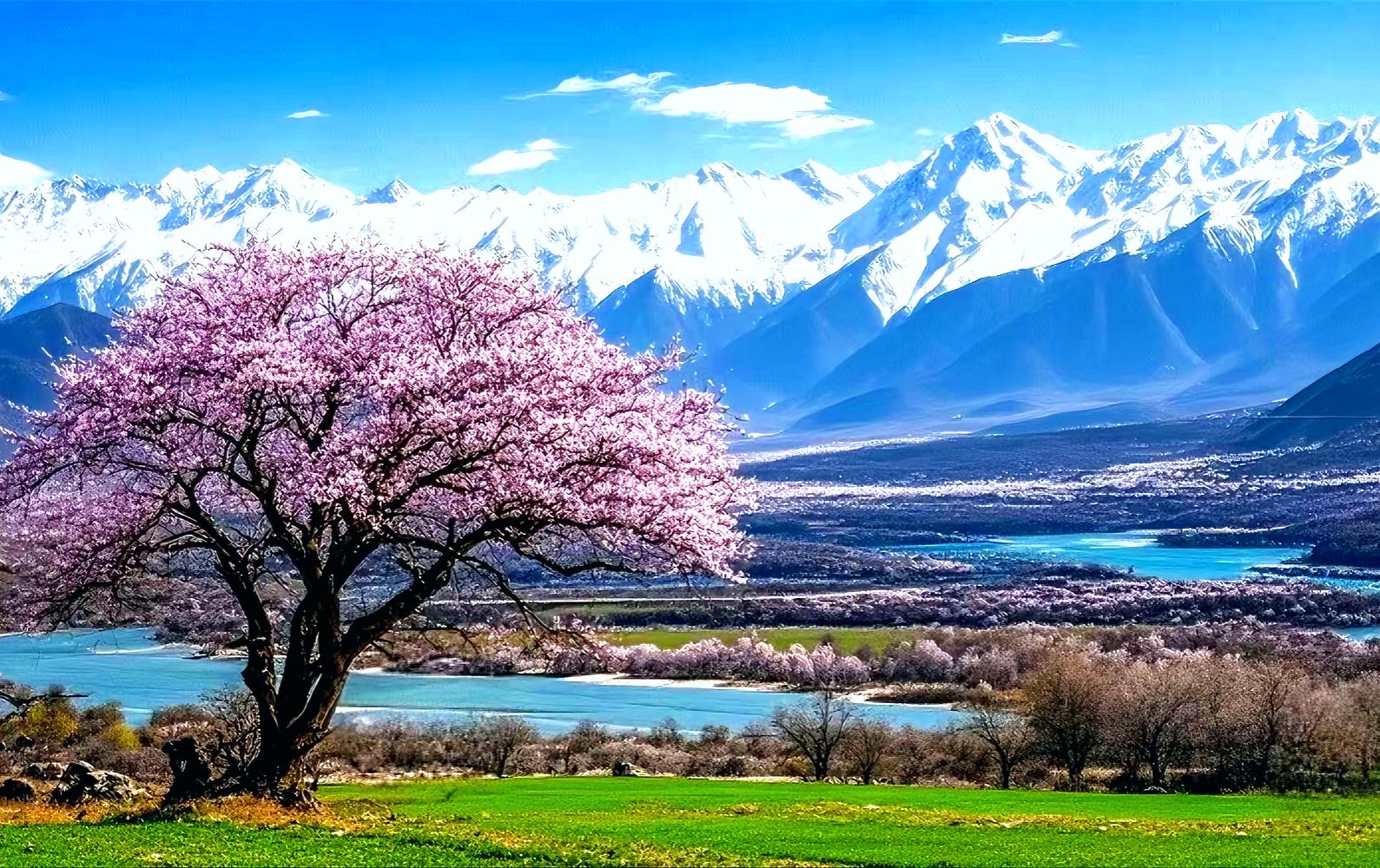
Nyingchi Peach Blossom
22. Self-Drive, Bike, or Motorbike Across the Plateau
For ultimate freedom, rent a 4×4 or motorcycle to trace circuits through remote passes and villages. Key routes:
- Lhasa–Rongbuk–Everest Loop: 1,200 km of stark landscapes.
- Lhasa–Gyantse–Shigatse–Tingri: Himalayan passes and Tibetan plains.
Cyclists can tackle shorter stretches—like Lhasa to Yamdrok Lake—on sturdy mountain bikes. Each mile reveals deserted grasslands, yak caravans, and chortens perched on ridges.
Insider Tip: Fuel up whenever you can—gas stations are sparse on high-altitude highways.
23. Participate in Tibetan Meditation Sessions
Within monastery walls, join monks for silent retreats or guided meditation sessions. Venues such as Drepung and Tashilhunpo Monasteries offer day programs that include breathwork, visualization, and mantra chanting. Even an hour in these consecrated halls yields a calm and clarity rarely found elsewhere.
Insider Tip: Bring a meditation cushion (or use a folded jacket) and wear loose, modest clothing.
24. Craft Tibetan Incense or Handicrafts
Dive into a hands-on workshop to learn Tibetan arts:
- Incense Making: Blend local herbs, flowers, and roots under a master’s guidance.
- Thangka Painting: Trace sacred motifs onto canvas with mineral pigments.
- Weaving & Jewelry: Try your hand at yak wool weaving or silver bead stringing.
Take home a piece of your own making—and deeper appreciation for centuries-old craftsmanship.
Insider Tip: Workshops are often held in Lhasa’s artist quarter near Drepung Monastery—ask your guide for locations.
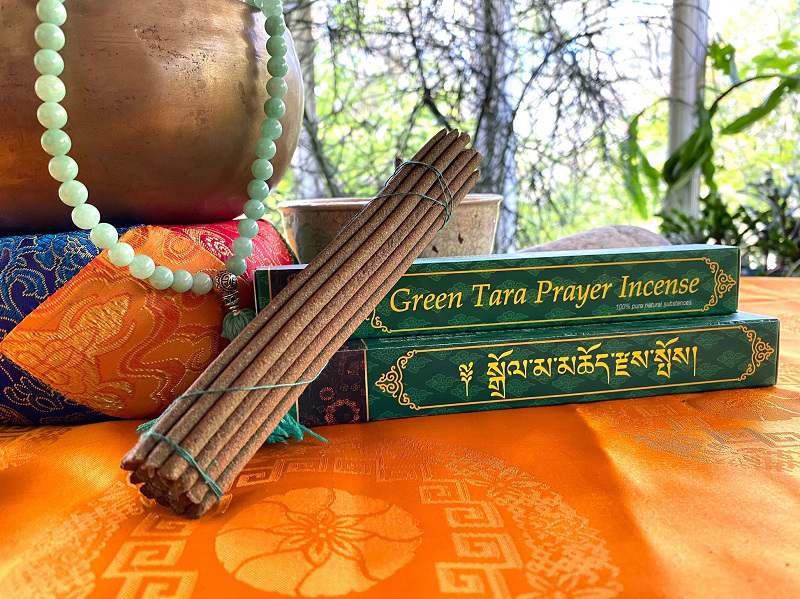
Tibetan Incense
25. Relish a Linka (Tibetan Picnic) in Norbulingka Park
Beat the urban bustle with a Linka in Norbulingka, the summer palace of the Dalai Lamas. Amid rose gardens, willow-shaded ponds, and ornate pavilions, spread a low-slung table of tsampa balls, barley wine, and roasted potatoes. Join Tibetan families singing folk songs under paper lanterns, and feel the echoes of royal banquets that once graced these lawns.
Insider Tip: Plan your Linka for late afternoon to enjoy Norbulingka’s golden sunset light and cooler temperatures.
Why Travel with China Dragon Travel?
At China Dragon Travel, we specialize in crafting seamless, authentic Tibetan experiences. From securing permits on the Qinghai–Tibet Railway to arranging home-stays with nomadic families, our local expertise ensures you see Tibet’s hidden treasures safely and in style. Whether you seek a spiritual pilgrimage around Mount Kailash or a cultural deep dive amid Lhasa’s monasteries, our tailored itineraries and 24/7 support put the strength behind every journey.
Ready to explore Tibet’s magic? Contact China Dragon Travel today and let us turn your Himalayan dreams into reality.



